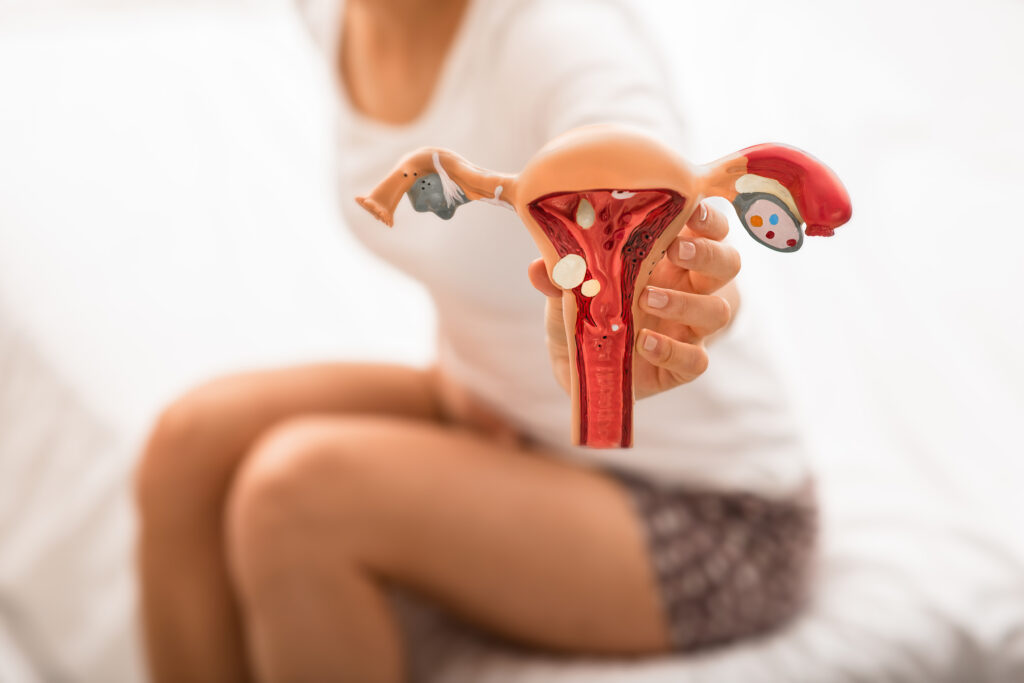A Closer Look at Endometriosis, How To Recognize Symptoms and More
Posted By:

Dr. Michael Coyle, DO FACOOG, FPMRS

Endometriosis is one of the most misdiagnosed and underdiagnosed women’s health conditions. Unfortunately, the condition also comes along with severe, often painful symptoms that can even impede fertility when left untreated. Therefore, early recognition and treatment are vital. The Coyle Institute provides comprehensive evaluations for those who suspect endometriosis symptoms while leading the way in providing the best treatment.
Understanding Endometriosis
Endometriosis is a common but often misunderstood condition that affects millions of women worldwide. It occurs when tissue similar to the lining of the uterus, known as the endometrium, grows outside the uterus, typically in the pelvic cavity. This misplaced tissue can adhere to organs such as the ovaries, fallopian tubes, the outer surface of the uterus, bowels and bladder. This overgrowth of tissue can cause inflammation, scarring and the formation of painful adhesions.
The chronic nature of endometriosis can significantly impact a woman’s quality of life, as it can come along with everything from ongoing pain and difficult menstruation to fertility issues. According to the National Infertility Association, up to 40 percent of women with infertility have endometriosis.
Symptoms of Endometriosis
Symptoms of endometriosis can be highly variable between women; not all women have the same symptoms, intensity, or specific manifestations of the condition.
While one of the most common symptoms of endometriosis is painful periods, the condition can bring about many elusive symptoms that don’t immediately seem to be related to the condition. Some of the symptoms associated with endometriosis include:
- Pelvic pain and cramping, particularly during menstruation
- Pain during intercourse (dyspareunia)
- Menstrual irregularities, such as heavy or irregular periods
- Infertility or difficulty getting pregnant
- Chronic fatigue or exhaustion
- Gastrointestinal issues, including diarrhea, constipation, bloating, or nausea
- Painful bowel movements or urination, especially during menstruation
- Lower back pain or leg pain
- Painful ovulation
- Painful bladder syndrome or interstitial cystitis
Causes and Risk Factors
Endometriosis is a complex and often challenging condition, and its potential causes are not always immediately clear. Nevertheless, there are several theories.
One leading theory suggests that retrograde menstruation, where menstrual blood flows backward into the pelvic cavity instead of exiting the body, could play a significant role in the development of endometriosis. This theory posits that the displaced endometrial tissue attaches and grows on pelvic organs after being displaced instead of expelled as it should be.
Genetic factors also appear to contribute to the risk of developing endometriosis. Evidence suggests that individuals with family members affected by the condition are more likely to develop it themselves. Researchers have even identified specific gene variants — specifically the ESR1 gene — associated with endometriosis.
Hormonal influences, like estrogen dominance, may further exacerbate the development and progression of endometriosis. Factors such as hormonal imbalances or prolonged exposure to estrogen may also create an environment conducive to the development of endometrial lesions.
Doctors identify risk factors for endometriosis by closely examining menstrual cycle characteristics, such as cycle length and flow intensity, and considering the patient’s medical history, including the age at which menstruation began and any family history of the condition.
Diagnosing Endometriosis
Endometriosis is potentially one of the most misdiagnosed urogynecological conditions. Research indicates it can take up to 11 years for some women to receive an accurate diagnosis because symptoms do not always manifest in the same way. This is why it is so important to work with a doctor willing to take the extra steps to thoroughly evaluate your history and run the proper diagnostic tests.
Diagnostic methods for endometriosis can include:
- Pelvic examinations
- Imaging tests, such as intrauterine ultrasounds or MRI
- Laparoscopic exploration for a definitive diagnosis
A differential diagnosis is essential with endometriosis because symptoms like pelvic pain and menstrual irregularities can overlap with other gynecological conditions. By considering factors like family history, menstrual cycle characteristics and medical history, healthcare providers distinguish endometriosis from similar conditions like pelvic inflammatory disease or ovarian cysts.
Endometriosis Treatment Options
Endometriosis treatment may involve more than one element. Some of the treatment strategies for endometriosis may include:
- Pain management: Various pain relief medications and lifestyle adjustments can help alleviate symptoms such as pelvic pain and cramping associated with endometriosis.
- Hormonal therapies: Hormonal treatments, including birth control pills and gonadotropin-releasing hormone (GnRH) agonists, may regulate hormone levels and reduce endometrial tissue growth.
- Surgical options: Surgical interventions like laparoscopy or hysterectomy may be recommended for severe cases or when conservative treatments fail to provide relief.
- Alternative and complementary treatments: Alternative therapies like dietary modifications, acupuncture and physical therapy can complement medical treatments and may offer symptom improvement and support for overall well-being.
Fertility treatments like in vitro fertilization (IVF) or intrauterine insemination (IUI) offer options for women with endometriosis looking to conceive. These treatments may be effective for overcoming endometriosis-related fertility hurdles and increasing their chances of conceiving.
The Coyle Institute’s Approach to Endometriosis
Dr. Michael Coyle and the team at the Coyle Institute take a personalized approach to endometriosis diagnosis and management. We go the extra mile to obtain an accurate diagnosis as quickly as possible through a differential diagnostic process and thorough patient evaluation.
We also combine medical, surgical and holistic treatment methods for symptom management to ensure patients diagnosed with endometriosis can maintain a good quality of life and possibly even conceive despite the challenges. We are also committed to ongoing research and advancements in endometriosis treatment at the Institute.
Living With Endometriosis Doesn’t Have To Be Scary With a Plan and the Best Treatment Provider
An endometriosis diagnosis can be scary, but there are effective strategies for managing pain and symptoms. Additionally, building a support network that includes the best healthcare providers can help you address the psychological and emotional impacts of your condition. If you suspect you have been dealing with endometriosis symptoms, seeking the right level of care is the first step toward a better quality of life. Reach out to Coyle Institute for an expert consultation by calling 850-637-8258.
